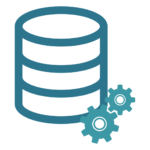Automation has rapidly become the backbone of modern business operations, and tools like Zapier are empowering companies to streamline workflows, minimize manual effort, and boost overall efficiency. By automating routine tasks, businesses can redirect their focus from repetitive processes to strategic growth. In this post, we’ll explore a step-by-step automation I built using Zapier that automates lead collection, proposal creation, and team notifications — a game-changer for businesses looking to accelerate their sales and operations workflows.


The Power of Automation in Business
Modern businesses are constantly challenged to handle increasing volumes of data and customer interactions, all while staying efficient. Automating time-consuming processes like lead generation and proposal drafting allows businesses to remain agile while increasing their capacity to serve clients more effectively. In this example, we’ll dive into how combining Zapier with tools like Typeform, Google Sheets, Slack, OpenAI, and Google Docs can revolutionize business workflows.
The Workflow: From Lead to Proposal in Minutes
Here’s a breakdown of the automated process, showing how businesses can minimize manual tasks and keep everyone in the loop with instant notifications.
1. Lead Capture via Typeform
The journey begins with a Typeform where prospective clients submit their information. The form collects essential details such as the industry, the client’s needs, and their expectations. This data becomes the backbone of the entire automation, offering rich insights into what the lead is looking for.
Using Zapier, every form submission is automatically captured and ready for the next steps. By eliminating the manual entry of lead data, businesses can save time and reduce errors in the process.
2. Storing Lead Data in Google Sheets
Once the form is submitted, Zapier automatically sends the lead’s information to a Google Sheet, which acts as a real-time database. This not only creates a backup of all the responses but also allows the sales team to view all leads in a single, organized document. You can easily sort and filter leads based on specific needs, industries, or services requested.
3. Triggering a Slack Notification to the Sales Team
Based on the industry selected by the lead in the form, Zapier sends a Slack notification to the relevant sales group. For example, if a lead is interested in e-commerce services, the notification is pushed to the sales team responsible for that industry. This ensures that the right team is alerted in real-time and can act on the lead immediately.
Slack notifications are essential for keeping the team on their toes and ensuring no opportunity falls through the cracks. Businesses can integrate this with multiple communication tools to alert teams faster, improving lead conversion rates.
4. Generating a Proposal Draft with OpenAI
This is where the magic happens! Once the lead is captured and stored, Zapier creates a custom prompt based on the data from the form and sends it to OpenAI to draft a tailored business proposal. The prompt includes key insights from the form submission such as the client’s industry, specific needs, and preferred services, ensuring the generated proposal is hyper-relevant.
This eliminates the tedious task of manually creating proposals and ensures consistency in tone, language, and structure. With OpenAI, you can create a solid draft in minutes that the team can further refine before sending it to the client.
Using the following data from a form submission:
- First name: {{First name}}
- Last name: {{Last name}}
- Phone number: {{Phone number}}
- Email: {{Email}}
- Company: {{Company}}
- Business Industry: {{Which industry best describes your business?}}
- Current Technologies: {{Which technologies are you currently utilizing?}}
- Services Required: {{Which services are you looking for in a consulting partner?}}
- Key Value Proposition: {{What value proposition is most important for your organization?}}
- Interest in AI and ML: {{How interested are you in leveraging Machine Learning and AI technologies?}}
- Product Development or Data Science Support: {{Are you looking for support in product development or data science?}}
- Importance of Efficiency: {{How crucial is efficiency in the services provided to your organization?}}
- Level of Customization Expected: {{What level of customization do you expect from a consulting partner?}}
- End-to-End Support Requirement: {{How important is it for you to have end-to-end support in your projects?}}
- Expectations from Consulting Partner: {{What are your expectations from a consulting partner?}}
Generate a professional and focused business proposal for SG Consulting to help {{First name}} {{Last name}} from {{Company}} with their specific needs. The proposal should be structured with the following sections:
1. Title Page: Include the proposal title, company information (SG Consulting), client information ({{First name}} {{Last name}}, {{Company}}), and date.
2. Executive Summary: Provide a brief overview of the key problem and the solution that SG Consulting will offer, emphasizing how our AI-driven, data-focused solutions align with their requirements. Include references to specific services requested (e.g., {{Which services are you looking for in a consulting partner?}}).
3. Introduction: Briefly introduce SG Consulting, highlighting our expertise in AI, data infrastructure, cloud development, and machine learning, with references to our successful projects in {{Which industry best describes your business?}}.
4. Problem Statement: Based on the client’s business industry and value proposition ({{What value proposition is most important for your organization?}}), define the specific business challenges they face and how SG Consulting can address them.
5. Proposed Solution: Describe how our services, especially {{Which services are you looking for in a consulting partner?}}, will solve the client’s problems. Highlight the customization ({{What level of customization do you expect from a consulting partner?}}) and efficiency ({{How crucial is efficiency in the services provided to your organization?}}) we provide.
6. Market Analysis: Offer insights into how our solutions will position the client for success in their industry, noting relevant market trends and competitors.
7. Qualifications: Detail our experience in {{Which industry best describes your business?}}, showcasing key projects that align with their needs (e.g., data science, machine learning, and AI as noted in {{How interested are you in leveraging Machine Learning and AI technologies?}}).
8. Project Scope: Provide a step-by-step outline of our services and deliverables, focusing on {{Which services are you looking for in a consulting partner?}}.
9. Pricing and Costs: Create a transparent breakdown of costs associated with our services.
10. Timeline: Offer a projected timeline for the completion of the project, tailored to the client’s sense of urgency and efficiency needs.
11. Terms and Conditions: Include legal aspects and terms related to payment, services, and warranties.
12. Conclusion: Summarize the benefits of partnering with SG Consulting and provide a call to action for further discussion.
Use clear, concise language, focusing on the client’s key concerns and expectations. Ensure that the proposal is professional and highlights the value SG Consulting will bring to {{Company}}.
If there is additional data (such as budget or specific technical requirements), include those in the respective sections of the proposal.
5. Storing the Draft in Google Docs
Zapier then sends the proposal draft to Google Docs, where it is saved for further editing and collaboration. The document is neatly organized and accessible to the entire team, making it easy for sales reps to tweak the content before final submission. This is another example of how automation reduces manual work while ensuring documents are stored in a centralized, accessible space.
6. Sending an Email to the Sales Team
Finally, the last step in this workflow is sending an automated email to the sales team. The email contains the Google Doc link along with a summary of the lead’s information and the generated proposal. The team is then prompted to review, refine, and finalize the proposal before sharing it with the client.
This seamless integration between multiple platforms ensures that the entire sales process — from lead capture to proposal generation — happens in real time, with minimal human intervention.

Why This Automation Matters for Businesses
- Time Efficiency: Automating repetitive tasks like lead data entry and proposal drafting allows your team to focus on high-value tasks like strategy and client relationships. What once took hours to complete can now be achieved in minutes.
- Increased Accuracy: Automation ensures that no data is lost or overlooked. Leads are captured instantly, and proposals are generated based on precise inputs, minimizing errors.
- Faster Response Times: Real-time Slack notifications ensure that the right team is notified about new leads as soon as they come in. This instant communication is critical in industries where timing can make or break a sale.
- Consistency Across Proposals: By leveraging AI to generate the first draft of a proposal, you ensure that the language, tone, and content are consistent, making the sales process more professional and polished.
- Scalability: Whether you’re managing 10 leads or 1,000, this process scales effortlessly, making it ideal for businesses looking to grow without adding more manual tasks to their teams.
Conclusion
By integrating tools like Typeform, Google Sheets, Slack, Google Docs, and OpenAI with Zapier, businesses can create powerful workflows that not only boost productivity but also ensure that nothing falls through the cracks. This automation keeps all relevant teams informed in real time, minimizes manual work, and delivers more personalized, timely proposals to prospective clients.
In an era where efficiency and speed are paramount, automating your lead management and proposal creation processes can give your business a significant competitive edge. With workflows like this, you’re not just saving time — you’re transforming the way you engage with clients.
We at SG Consulting, build data and AI-first solutions and tools for businesses to leverage cutting-edge technology and boost their business toward Scalable Growth ⚡️
Follow me on LinkedIn: Shivang Gupta










